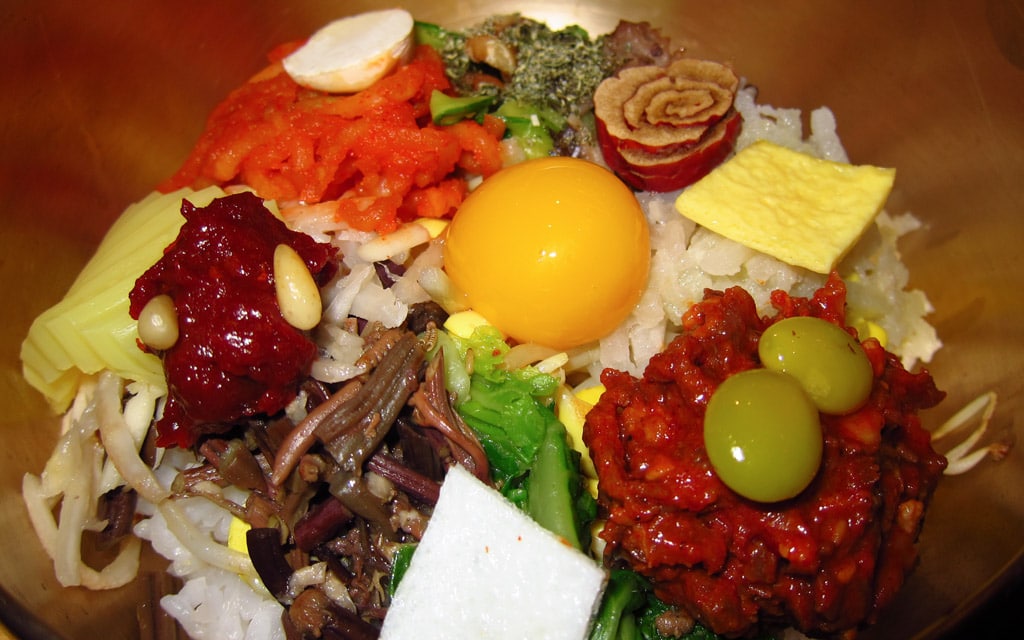
Bibimbap, meaning mixed rice, is a famous Korean dish composed of white rice topped with seasoned vegetables, gochujang (chili pepper paste), and an egg. Bibimbap is a delicious dish that is enjoyed by both locals and tourists and great way to introduce Korean food new and curious foodies in Korea.
The first mention of bibimbap was in a late 19th century cookbook known as Siuijeonseo. In the book, the dish is known as bubuimbap. Some scholars believe that the dish originates from ancestral rites, where all food offerings were mixed prior to the ceremony.
Bibimbap can be prepared in a number of ways with a wide variety of ingredients. The most common preparation is to add vegetables and sliced meat, such as beef, to steamed rice. Vegetables include cucumbers, mushrooms, zucchini, lettuce, spinach, and sprouts. Lastly, gochujang, a spicy red chili pepper paste and an egg, raw or cooked, top the dish off.
Presentation and placement of the vegetables by color is also important in the preparation of the dish. When eating, all the rice, vegetables, meat, and egg should be mixed together to achieve the best taste.
The popularly of bibimbap has grown over the years internationally. The dish can now be found in Korean restaurants all around the world and even on flights arriving and departing from South Korea.
Variations include Jeonju bibimbap and dolsot bibimbap. Jeonju bibimbap is a very traditional dish popular in Jeonju, the capital of the North Jeolla Province. It is cooked in a bowl and based on a dish served to royalty during the Joseon Dynasty. Dolsot bibimbap is served in a hot stone pot. Dolsot means “stone pot.” Since the pot is so hot, the raw egg will begin to cook and the rice at the bottom of the pot will turn crispy and golden brown which is quite delicious.
Click here to read more about Korean dishes
Last Updated on Dec 28, 2021